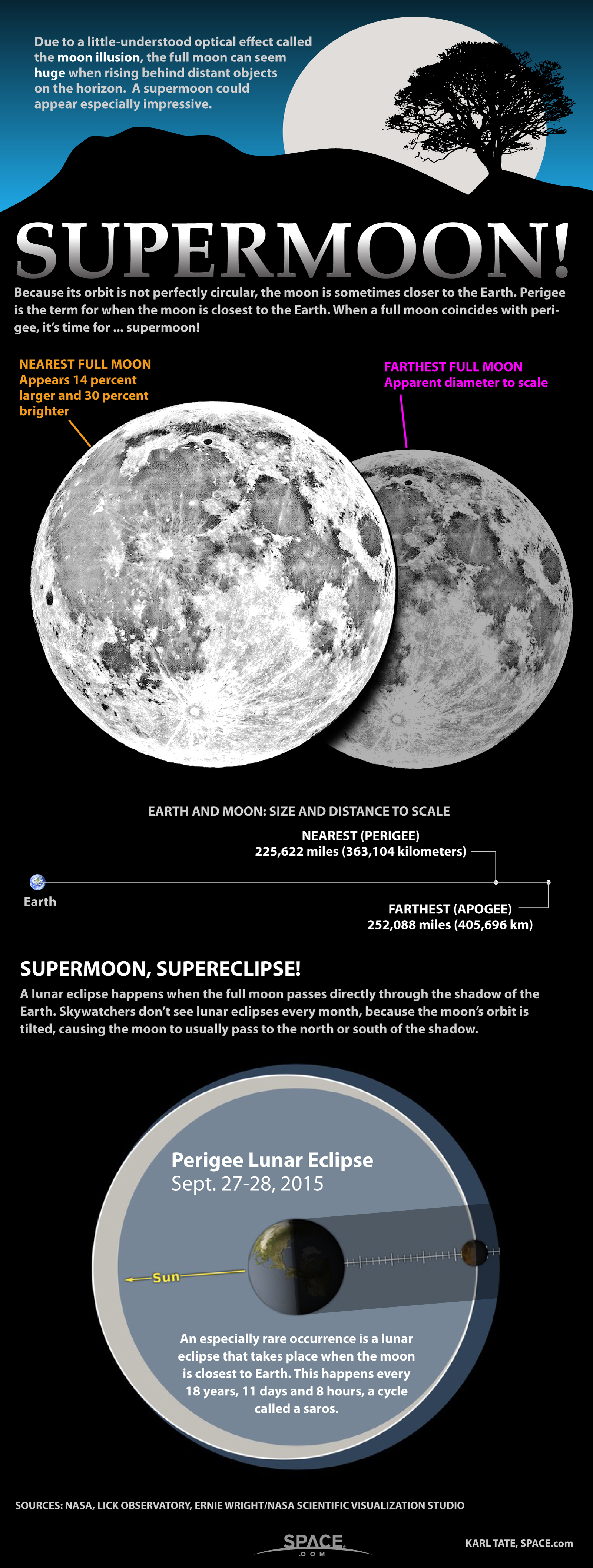The Closest Supermoon Full Moon Since 1948: How to See It Online

November's full moon on Monday (Nov. 14) will be the biggest and brightest one since 1948, making it a great time to get outside and marvel at the lunar sight for stargazers around the world. But if it happens to be cloudy in your area, don't despair. You can still watch the so-called "supermoon" online in several live webcasts, starting tonight (Nov. 13).
The Full Beaver Moon of November is called the supermoon because the full phase is taking place at the moon's closest point in its orbit around the Earth, also called the perigee. NASA says the moon will appear slightly larger than a typical full moon, at about 15 percent larger. The moon won't look this large again until 2034. [Supermoon November 2016: When, Where & How to See It]
The first webcast here is from astronomy broadcasting service Slooh, which will start Sunday (Nov. 13) at 8 p.m. EST (0100 GMT Monday, Nov. 14). You can also watch the supermoon live on Space.com, courtesy of Slooh. The show will take place live from Slooh's flagship observatory at the Institute of Astrophysics of the Canary Islands, where Slooh has telescopes operated by members.
During the broadcast, Slooh's chief astronomical officer Paul Cox and Bob Berman, astronomy editor for The Old Farmer's Almanac, will talk about how the full moon grows and shrinks throughout the year. Later, Janice Stillman -- the editor of The Old Farmer's Almanac -- will discuss history and folklore concerning the November full moon from Native American tribes and early American colonists.
Viewers can take part by commenting on @Slooh on Twitter, on a Facebook live video, or on a live chat on Slooh.com.
A second livestream will show the moon live from Baraket Observatory's dome in Israel, where the supermoon will rise above the Judaean Mountains. That broadcast will start 9:50 a.m. EST (1450 GMT) on Monday (Nov. 14).
The supermoon will also be broadcast live from Italy through the Virtual Telescope Project. Starting Monday at 11 a.m. EST (1600 GMT), Gianluca Masi will show the moon rising above the skyline of Rome.
Breaking space news, the latest updates on rocket launches, skywatching events and more!
Editor's note: If you snap an awesome photo of the moon that you'd like to share with Space.com and our news partners for a potential story or gallery, send images and comments to managing editor Tariq Malik at spacephotos@space.com.
Follow Elizabeth Howell @howellspace, or Space.com @Spacedotcom. We're also on Facebook and Google+. Original article on Space.com.

Elizabeth Howell (she/her), Ph.D., was a staff writer in the spaceflight channel between 2022 and 2024 specializing in Canadian space news. She was contributing writer for Space.com for 10 years from 2012 to 2024. Elizabeth's reporting includes multiple exclusives with the White House, leading world coverage about a lost-and-found space tomato on the International Space Station, witnessing five human spaceflight launches on two continents, flying parabolic, working inside a spacesuit, and participating in a simulated Mars mission. Her latest book, "Why Am I Taller?" (ECW Press, 2022) is co-written with astronaut Dave Williams.


